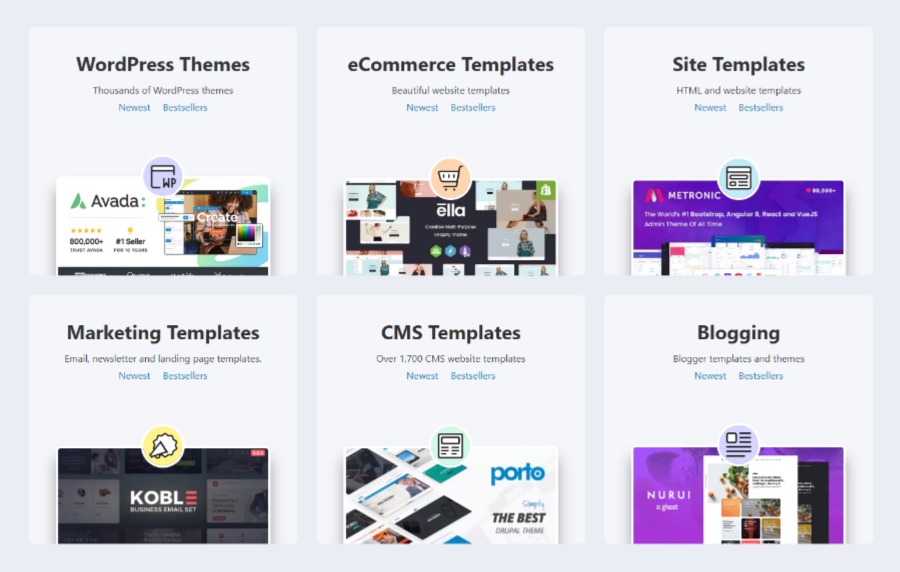
The Ultimate Guide to User-Friendly Website Directories
In today’s digital age, navigating the vast expanse of the internet can be overwhelming. With countless websites vying for attention, finding reliable and user-friendly resources can be challenging. This is where a well-structured website directory comes into play. A user-friendly website directory simplifies online navigation, ensuring users find what they need quickly and efficiently. In this guide, we’ll explore the key features of an effective website directory and how the term 주소모음 (address collection) plays a crucial role in enhancing user experience.
What Makes a Website Directory User-Friendly?
A user-friendly website directory is designed to make online navigation straightforward and enjoyable. Here are some essential features that contribute to its effectiveness:
1. Intuitive Layout and Design
The layout of a website directory should be clean and organized. Categories and subcategories must be clearly defined, allowing users to find relevant information without confusion. An intuitive design ensures that users can navigate through different sections effortlessly. For instance, a well-structured 주소모음 will categorize websites into relevant sections like technology, health, and entertainment, making it easier for users to locate specific sites.
2. Comprehensive Listings
A robust directory includes a wide range of listings, covering various topics and interests. Each listing should provide essential details about the website, such as a brief description, key features, and a direct link to the site. By offering a diverse range of options, a 주소모음 helps users find exactly what they’re looking for, whether it’s a popular blog, an e-commerce store, or a niche site.
3. Search Functionality
Effective search functionality is a cornerstone of a user-friendly directory. Users should be able to search for specific websites or topics quickly using keywords. Advanced search options, such as filters and sorting features, can further enhance the user experience. A 주소모음 that includes robust search capabilities allows users to locate websites with precision, reducing the time spent browsing through numerous listings.
4. Mobile Responsiveness
In an era where mobile internet usage is on the rise, ensuring that a website directory is mobile-friendly is crucial. A responsive design adapts to different screen sizes, providing a consistent experience across devices. Whether users access the directory from a smartphone, tablet, or desktop, the 주소모음 should maintain its usability and functionality.
5. Regular Updates
The digital landscape is constantly evolving, with new websites emerging and existing ones changing. A user-friendly directory should be regularly updated to reflect these changes. Outdated listings can lead to frustration and diminish the credibility of the 주소모음. By keeping the directory current, users can trust that they are accessing the most relevant and up-to-date information.
Benefits of Using a Well-Designed Website Directory
Utilizing a well-designed website directory offers several advantages:
1. Efficiency in Navigation
A structured 주소모음 streamlines the process of finding websites, saving users valuable time. Instead of sifting through search engine results or relying on random links, users can access a curated list of sites organized by category. This efficiency is especially beneficial for those seeking specific resources or information.
2. Increased Visibility for Websites
For website owners, being listed in a reputable directory can boost visibility and drive traffic. A well-maintained 주소모음 can attract users interested in specific topics, increasing the likelihood of their site being discovered. Additionally, directories often provide valuable backlinks, which can improve a website’s search engine ranking.
3. Enhanced User Experience
A user-friendly directory enhances the overall online experience by providing a reliable resource for discovering new websites. With features like intuitive navigation, comprehensive listings, and effective search functionality, users can easily find and access the sites that meet their needs.
How to Create an Effective Website Directory
Creating a user-friendly website directory involves several key steps:
1. Define the Purpose and Scope
Before building a directory, determine its purpose and the scope of its content. Will it focus on a specific niche or cover a broad range of topics? Defining the purpose will guide the organization and structure of the 주소모음, ensuring it meets the needs of its target audience.
2. Choose the Right Platform
Select a platform or content management system (CMS) that supports the features you need. Many CMS options offer plugins or modules specifically designed for creating directories. Ensure that the chosen platform allows for easy updates and customization.
3. Organize Listings Effectively
Develop a clear categorization system for the directory. Group websites into relevant categories and subcategories, and provide detailed descriptions for each listing. This organization will help users navigate the 주소모음 with ease.
4. Implement Search and Filter Options
Incorporate search and filter functionalities to enhance user experience. Allow users to search for specific keywords and filter results based on criteria such as category, popularity, or date added. This feature will make the 주소모음 more accessible and efficient.
5. Focus on Mobile Optimization
Ensure that the directory is optimized for mobile devices. A responsive design will provide a consistent and user-friendly experience across different screen sizes. Test the 주소모음 on various devices to identify and address any issues.
6. Regularly Update the Directory
Keep the directory current by regularly reviewing and updating listings. Remove outdated sites, add new ones, and ensure that all information is accurate. Regular updates will maintain the credibility and usefulness of the 주소모음.
Popular Examples of User-Friendly Website Directories
Several website directories exemplify user-friendly design and functionality. These directories often feature clear categories, robust search options, and mobile responsiveness. Some notable examples include:
- DMOZ: Although it is no longer operational, DMOZ was a well-known directory that provided comprehensive listings and an organized structure.
- Yelp: Focused on local businesses and services, Yelp offers detailed listings, user reviews, and effective search and filter options.
- Yellow Pages: A traditional directory with a digital presence, Yellow Pages offers a vast range of listings and an intuitive search function.
Conclusion
In summary, a user-friendly website directory enhances the online experience by providing an organized and efficient way to discover and access websites. By focusing on features such as intuitive design, comprehensive listings, search functionality, mobile responsiveness, and regular updates, you can create a 주소모음 that meets the needs of users and website owners alike. Whether you’re looking for specific resources or aiming to increase your site’s visibility, a well-designed directory is an invaluable tool in the digital landscape.








